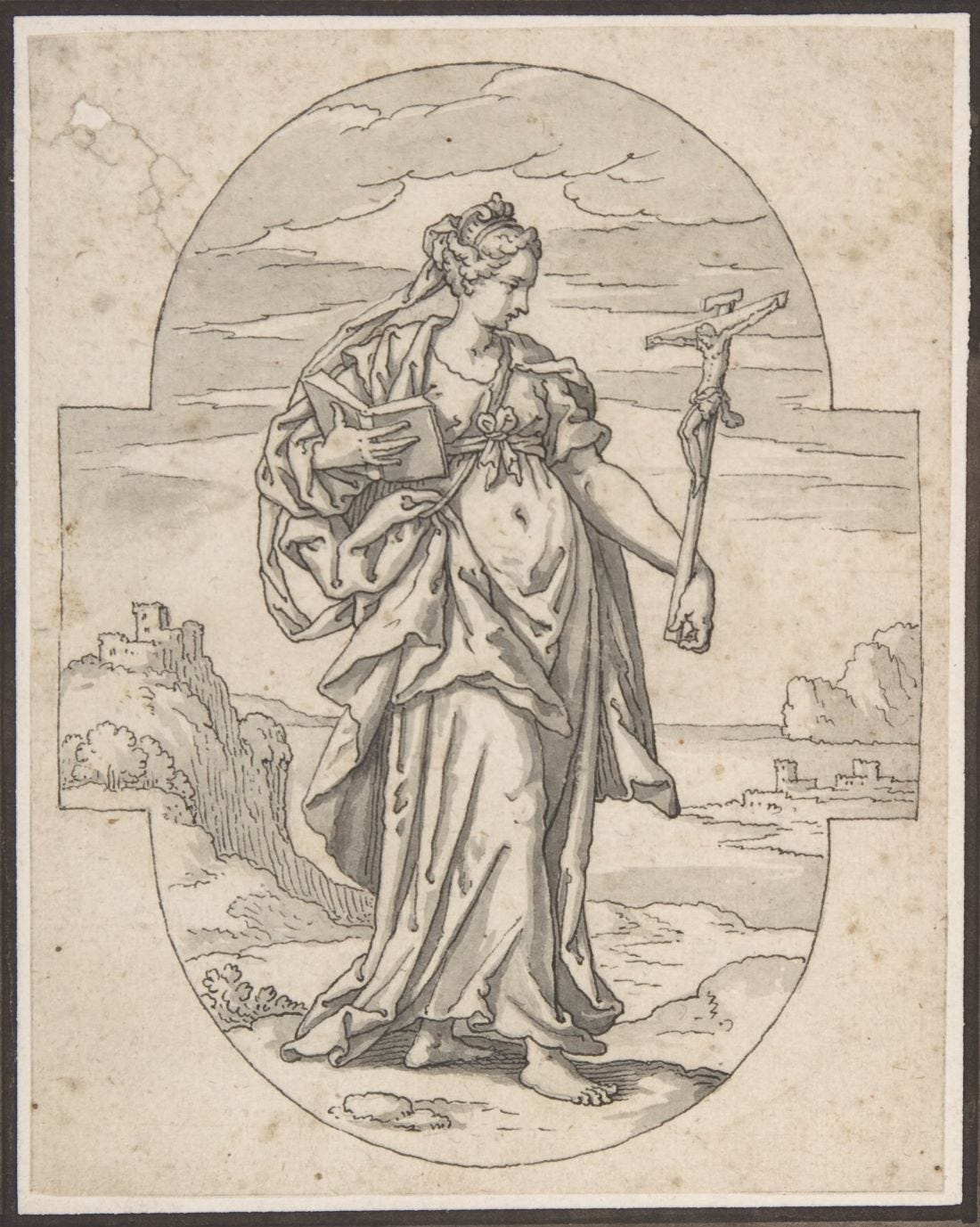Allegorizing is just about the worst thing they can accuse you of doing in the preaching business. They’re accusing you being like medieval preachers, who allegorized a scriptural passage trying to find a “spiritual meaning.” Instead of expounding what a text meant originally, they used it as a beguiling picture of some doctrine or application they had already decided to preach.
So you’re making stuff up and your medieval and you’re a Catholic.
In the hands of a preacher today, allegorizing might sound like this: The wall of Jericho isn’t the literal one around the Canaanite city that Joshua’s army faced. It’s so much more than that. It’s the outpost of Satan’s kingdom. Christ surrounds the evil with his army and marches around it. What brings down Satan’s kingdom? The shout of faith, that’s what!
You can almost hear the amens. Preachers can whip up an allegory from almost anything—crossing the Red Sea, healing a leper, miraculous jars of oil, whatever. It’s easier than studying and people eat it up.
A more responsible pastor is often secretly afraid of the way New Testament writers quote the Old Testament. Maybe they were just allegorizing. Their Old Testament references can seem pretty imaginative. But if we say they were allegorizing, then anybody is free to turn the walls of Jericho into whatever they want. The Bible becomes a stock of lively metaphors instead of God’s revelation of the truth.
As a result, many preachers avoid acknowledging Old Testament quotations in the New beyond saying, “Paul’s quoting Isaiah here.”
Early in my ministry, I decided that there must be something important in these quotations. They’re on every New Testament page. They’re presented as authoritative. And Jesus used them constantly.
Here are a few tips that I’ve found helpful for crafting solid analyses while avoiding flights of imagination.
1. A quotation is a hyperlink.
New Testament writers did not necessarily use words from the Old to prove a statement or an argument. These quotes were not “evidence” in that sense. Instead, the words functioned the same way we use hyperlinks today. We put hyperlinks in web publications for many reasons: to give relevant background, to enable a reader to dig deeper, to make an ironic comment, or to provide documentation.
When Paul refers to Psalm 68 in Ephesians 4.8-10, he is saying, “Click the link. Go back to David’s victory song. Christ is doing exactly what David sang about in the past.” Does the link strengthen Paul’s point in Ephesians? Yes. Psalm 68 dramatizes Paul’s focus on the body of Christ as a temple, on Christ filling the temple victoriously, and on the united purpose of Christ’s redeemed captives.
While Psalm 68 does not serve as smoking-gun evidence for Paul’s teaching, it does show that his teaching has sources deep in Israel’s history. Christ’s victory is one that God designed ages ago.
This kind of argument is rigorously grounded in the intentions of the Old Testament authors. David intended to describe Messiah’s victory (as I argued in this sermon). Paul was not allegorizing.
2. A biblical hyperlink might take several forms, not necessarily a direct quotation.
For example, an author might allude to another passage using key words. In 68.18, David alludes to Deborah’s song in Judges 5 using the striking phrase “lead captivity captive.” Also, an author might summarize a large passage using a mixture of quotation and allusion. This is the method Paul uses in Ephesians 4.8, where he captures the themes of Psalm 68 using a quotation from verse 18 and an allusion to the larger idea of God giving strength to his people. Even further, an author might string together a series of quotations from many different texts, as Paul does in Romans 3.10-18.
So when a reader comes to words that he suspects are a hyperlink, he needs to determine is what sort of hyperlink it is. If Paul's link to Psalm 68 is mistaken for a direct quote then one might accuse Paul of changing David’s words. But as I said in my post last week, I do not find that a plausible reading.
Is it possible to see a hyperlink where there isn't one? Doesn't this method open the door to allegorizing?
Any method of interpretation can be abused. But this method of discovering hyperlinks is open to challenge and refutation. The mere fact that a single word appears in two different texts is not enough to validate a link. Even the appearance of the same phrase in two different texts won't suffice. This method requires you to argue your case based on strong verbal parallels. It's not foolproof. But it is not subjective whimsy either. The method has an objective basis in textual evidence.
3. The richness of a hyperlink only emerges after you click it.
When we assume unity between Paul and David—assume that Paul makes the reference to Psalm 68 because he understands it deeply—then our own study of David deepens. We perceive how he wove his own writings into the tapestry of previous Scriptures. We appreciate that the Old Testament writers’ devotion to the coming Messiah was conscious, focused, and rooted in their earthly experiences, not just inspired by the occasional vision of a vague future.
And we grasp that the New Testament writers’ devotion to the Old was profound. They did not discover a stock of imagery waiting to be allegorized for their own purposes. The leading of the Holy Spirit in their writing came in large measure through what he had already spoken in many ways to the fathers by the prophets but has in these last days spoken through the Son.
The New Testament authors were captured by the Old Testament Scriptures. We should not allow abuses of this truth to prevent our being nourished by it.




